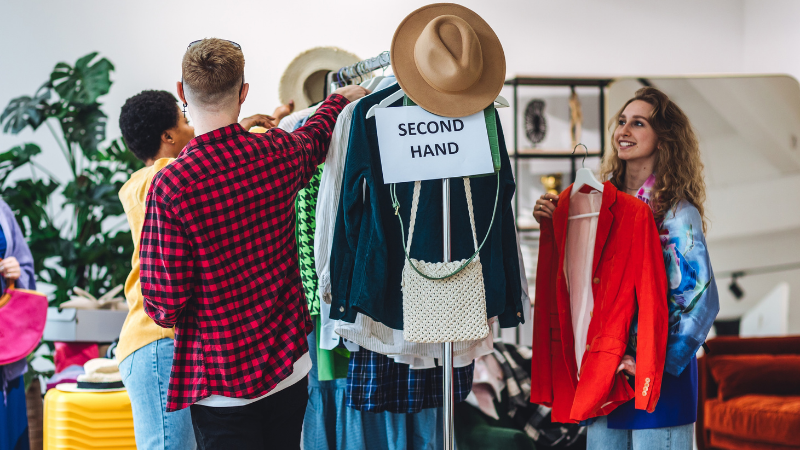
Digital Donations Save Time and Strengthen Your Non-profit’s Mission
Digital donations help Canadian non-profits raise more money, save time and earn donor trust through seamless, secure giving.

From vintage vinyl to barely-worn designer jackets, Canadians are finding new value in old treasures. Second-hand shopping is quickly becoming the go-to choice for many.
A new report from retail consultancy DIG360 and the Angus Reid Institute reveals that 77 per cent of Canadian adults purchased at least one pre-owned item in the past year. Nearly a third (31 per cent) said concerns over U.S. tariffs influenced their decision to thrift more often. This shift is being fuelled by a mix of economic pressures, sustainability goals, and a love for the thrill of the hunt that is creating fresh opportunities for small and medium businesses willing to tap into the resale market.
Younger Canadians, particularly Gen Z and Millennials, are leading the change, especially when it comes to books, music and adult clothing and shoes. Their top platforms? Facebook Marketplace ranks highest, followed by traditional thrift stores and garage sales.
Why the surge? For many, it is the financial upside, 84 per cent say cost savings are the top motivator but sustainability and a fun sense of treasure-hunting also matter. In fact, 71 per cent believe pre-owned shopping is a great way to find unique items, and 54 per cent describe it as an enjoyable adventure.
Still, not everyone is convinced. Some Canadians avoid second-hand shopping due to the time it takes, discomfort with thrift stores, concerns about quality, or simply forgetting it’s an option.
Interestingly, more than 90 per cent of Canadians say they have sold or donated items in the last year, and a quarter report doing so more often. That shows the second-hand market isn’t just about buying, it’s about a full cycle of reuse.
The resale and reuse model has evolved from a niche concept to an expected one. Consider introducing a buy-back program, consignment section, or “trade in for store credit” offer.
Example: A small outdoor gear shop could accept gently used jackets, tents, and hiking boots from customers, then resell them alongside new stock at a lower price. This keeps inventory fresh, appeals to budget-minded shoppers, and encourages repeat visits.
Shoppers love the feeling of discovering something one-of-a-kind. Create a section in your store or even a special monthly event that celebrates these finds.
Example: A boutique could host a “Thrift and Sip” night where customers browse curated second-hand clothing while enjoying local coffee or wine. The sense of occasion turns a simple shopping trip into an experience worth talking about.
Many shoppers care about where their purchases come from and the impact they have. Share the backstory of your pre-owned items, your sourcing process, and how buying second-hand helps the planet.
Example: A small bookstore could tag used books with handwritten notes from staff about where the book came from or why it’s worth reading. This makes each item feel personal and special.
Some customers still worry about quality or the “used” stigma. Reassure them by cleaning, repackaging, and even offering guarantees.
Example: A children’s toy shop could thoroughly sanitize and repackage gently used toys in branded boxes with a “Pre-Loved and Ready for Play” label. This signals care and quality, removing doubts.
The second-hand trend has grown into a powerful force in retail, reshaping how Canadians shop. Whether driven by budgets, the environment or cross-border trade concerns, pre-owned shopping is here to stay. For small and medium businesses, this shift is an opportunity to lean into reuse, craft memorable shopping experiences, build trust, and meet customers where they already live. Embracing this can help your business thrive in the evolving retail landscape.
________________________________________________________________________________________
Sources:

Digital donations help Canadian non-profits raise more money, save time and earn donor trust through seamless, secure giving.

Explore Moneris’ 2025 year in review with insights on Canadian spending trends, sports-driven economic boosts, domestic tourism growth, holiday shopping behaviour and Quebec’s Bill 72 compliance.

Turn your gas station’s payment transactions into insights that improve staffing, inventory, promotions, and customer satisfaction.

In this guide, we’ll walk you through the types of content that work best for SMBs and give you blog topic ideas you can use today.